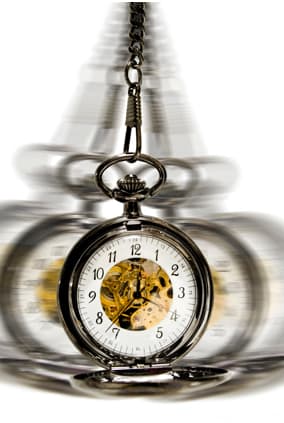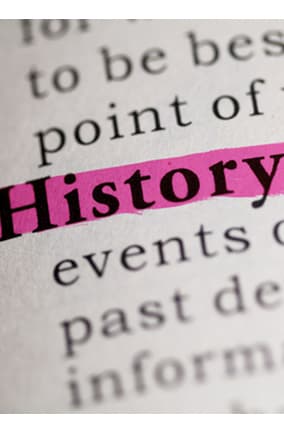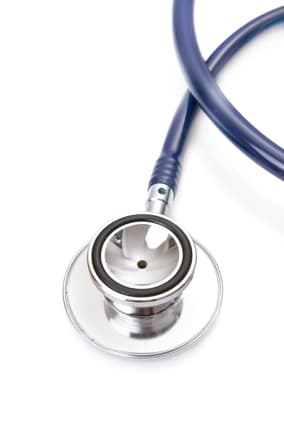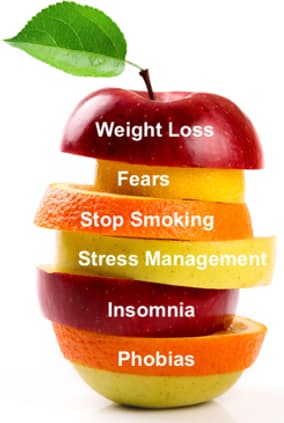THE HISTORY OF HYPNOTHERAPHY
Hypnosis has been studied since at least the 18th century. Similar phenomena have been seen throughout recorded history, as far back as the ancient Egyptians (e.g., the sleep temples of Ancient Egypt and Greece) dating back thousands of years. One of the greatest uses and needs for hypnosis was in the area of anesthesia.
MESMER (1734 – 1815)
Paracelsus had a theory that the heavenly bodies exerted an influence upon disease and healing, working through an all pervading universal magnetic fluid. In 1765, Franz Anton Mesmer, stated that man could influence this magnetic fluid to bring about healing.
Mesmer first applied magnets to patient's bodies for healing. Mesmer favored the rationalist views of his time, taking on terms like gravitation and magnetism to originally describe his theories of his healing work, and how the subtle fluids within the body could be influenced by him. He established salons where patients applied magnets to afflicted parts of their body. Later he moved to Paris where he further developed his theory.
Mesmerism caught on widely, attracting followers to many spiritualist, religious, and scientific variations of mesmerism, as well as to 'mesmerism' as a dramatic form of entertainment for its own sake ('stage hypnosis'). It was highly influential in a number of popular movements, some of which are still very popular today. In 1784, Louis XVI set up a commission of investigation, which included Benjamin Franklin, M. La Guillotin, and La Voisier. They concluded that magnetism with imagination had some effect, but Mesmer's magnetism theories were discredited, although his Society of Harmonies continued.
Le Marquis de Puysegur, a member of the Society, believed that the magnetic power was produced in his own mind and was transferred to the patient via his fingertips. He found that he could produce a sleep in which the patient would follow his commands - very authoritarian - and introduced the terms, “perfect crisis” and “profound sleep”.
In 1837, Dr. John Elliotson, Professor of Medicine at UCH London, conducted public clinical demonstrations of hypnosis and hypnotic phenomena, demonstrating its effects on voluntary and involuntary muscle, somnambulism, analgesia, hallucinations etc., which he attributed to the magnetism theory.
He was forced to resign, and began to edit the journal, The Zoist. There, he reported on James Esdaile, a Scottish surgeon working in India, who had performed several hundred operations painlessly using only hypnosis (mesmerism) as an anesthetic. Esdaile would produce something like suspended animation, now known as the Esdaile State, by stroking the patient’s body for several hours. Esdaile's logs indicated that fatal surgical shock or post operative infection occurred in only 5% of cases compared with the then norm of 50%. The medical establishment rejected these claims.
In 1841, the British doctor James Braid saw a demonstration of mesmerism by a French man named La Fontaine. He was impressed, and started using the mesmerism techniques in his practice. He used his shiny bright lancet case to induce his patients to enter a deep "hypnotic sleep". In that state, his patients would accept his "healing suggestions". He thought the reason this worked, was that staring at a bright object exhausted the nervous system, rather than it involving magnetism. He coined the word Neurypnology (literally ‘nervous sleep’).
In the early scientific study, Braid at first thought that hypnotic induction would yield a unique condition of the nervous system that was linked somehow to certain cures by suggestion. He later rejected this, and other physiological explanations of hypnosis, and emphasized "mental" factors almost exclusively. The theory of neural inhibition has never been completely rejected as applicable, however, though often considered insufficient by itself. Ivan Pavlov later greatly expanded on the neural inhibition theory in his concept of the physiology of sleep.
In 1884, Dr. Ambroise-August Liebeault, of France, proclaimed that he could cure people in a hypnotic state, by "suggestion". In 1886, he was joined by Professor Bernheim, from Paris, and together they published ‘De La Suggestion’, which further rejected the concept of magnetism.
About the same time, at the Salpetriere Hospital, Jean Martin Charcot was pushing his views that hypnosis was a pathological state akin to hysteria, and that the two were interchangeable. After a falling out, Bernheim’s theories won out over Charcot, and Charcot was discredited.
His belief turned out to be wrong, and his view of hysteria as a distinct mental illness as well, and his psychopathological view was rejected by the end of the 19th century. Two legacies of the neurological pathological theories of Charcot and the so-called "Paris school" of hypnosis that have endured are cortical inhibition theory and the later development of dissociation theory, though neither one serves as a complete theory of hypnosis on its own.
In 1890, two of Charcot’s pupils, Josef Breuer and Sigmund Freud, changed the approach of hypnosis from "suggesting" away the symptoms, to eliminating the apparent causes. Breuer noticed that hypnosis patients would often recall past events and talking about them would bring about emotional outpouring. Then they would lessen their symptoms. He called this his "talking cure", (such an emotional state would now be referred to as an abreaction). Freud was also experimenting with it, and looking for other reasons behind illness, but eventually stopped working with Breuer, and began developing what would later become psychoanalysis.
Sigmund Freud shifted from Charcot's view to that of the Nancy school's emphasis on suggestion rather than hysteria, believing that patients often remembered repressed memories in a beneficial process under hypnosis. Freud was reportedly a very poor hypnotist, being limited to a simple authoritarian style of induction, and in 1896, he rejected hypnotic induction ritual as unnecessary and too likely to foster unwanted amorous advances by patients ('transference', and the theory of hypnosis as an eroticized dependent relationship). Freud replaced the hypnotic procedure with simply placing his hand on the subject's forehead to help establish what he believed was the proper social relationship of doctor in dominance over patient.
Sigmund Freud had helped to push hypnosis out of the limelight with his invention of psychoanalysis. There is, however, an intimate connection between hypnosis and psychoanalysis: Hypnosis theory and practice anticipated much of psychoanalysis. Hypnotic procedures were adopted by the founder of psychoanalysis. The practice of psychoanalysis induces hypnosis.
Freud sought to escape the hypnotism label for his work; he began to use free association with no apparent awareness of that technique's basic similarity -- with its couch, relaxation, closed eyes, occasional touch on the client's forehead -- to the formal hypnosis he had renounced.
Not that Freud underestimated the power of therapeutic hypnosis. He used it for years. He translated books written by the leading practitioners of his day (Charcot and Bernheim). But Freud met with some discouragements, such as difficulty in hypnotizing many patients, and lack of long-lasting changes in those he did hypnotize. Perhaps another of the reasons for Freud's failure was his bleak view of the subconscious. He claimed it is a cesspool of aggressive and sexual impulses. Today's therapists are more likely to view the subconscious as a neutral well of memory. Many even take the opposite view to Freud: for them the subconscious is a potent source of good.
During WorldWar I, between 1914 to 1918, the Germans realized that hypnosis could help treat shell-shock quickly. It allowed soldiers to be return to the trenches almost immediately. A formularized version of hypnosis, autogenic training, was devised by Dr. Schultz.
After the second world war, Milton Erickson of the US, had a major impact on the practice and understanding of hypnosis and the mind. He theorized that hypnosis is a state of mind that all of us are normally entering spontaneously and frequently.
On the heels of Erickson's work, hypnosis evolved into a well respected practice, used by doctors, psychologists, business and law enforcement.
Milton Erickson died in 1980, but left a legacy of often zealous followers, a number of important contributions to the field, and several offshoot schools of applied psychology based on his core principles of indirect strategic therapy and suggestion, and based on hypothetical unconscious processes and indirect forms of human communication.
Examples include Jay Haley's strategic model of therapy, the MRI Interactional model, the Erickson-Rossi hypnotic theories, Neurolinguistic Programming (NLP), and a number of later frameworks such as that of Lankton (1983) and Gilligan (1987). The 'Ericksonian' models deliberately blur the traditional distinction between hypnosis and other forms of therapy.
In addition to Erickson and Hull, modern scientific research into hypnosis is often associated with a period of intense experimental research in the late 1950's and early 1960's by notables such as J.P Sutcliffe, T.X. Barber, M.T.Orne, E.R. Hilgard, R.E. Shor, and T.R. Sarbin. The work of these researchers had been particularly influential on the current scientific view of hypnosis, especially as viewed in medicine.
Related Articles
Cosmetic Acupuncture
Want to feel refreshed, energized with younger looking skin? Look no further! Call Today and schedule a divine facial acupuncture session!
Weight Management Program
After having tried all sorts of fad diets and pills most people are unhappy with their present weight. Visit our Weight Management Program and find about the Naturopathic Way To Better Health.
Are You Trying To Quit Smoking?
We offer an all natural Quit Smoking Program customized for you by our Toronto Naturopath using therapies such as acupuncture, hypnotherapy and homeopathy.




